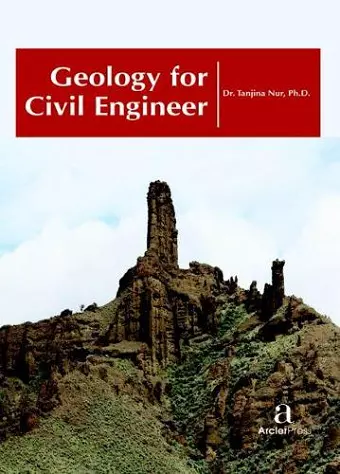Geology for Civil Engineer
Format:Hardback
Publisher:Arcler Education Inc
Published:30th Nov '16
Should be back in stock very soon

This book describes the importance of geology in civil engineering briefly. Geology is the study of earth, the materials of which it is made, the structure of those materials and the effects of the natural forces acting upon them and is important to civil engineering because all work performed by civil engineers involves earth and its features. Geology also provides a systematic knowledge of construction material, its occurrence, composition, durability and other properties. The knowledge of the geological work of natural agencies such as water, wind, ice and earthquakes helps in planning and carrying out major civil engineering works. For example the knowledge of erosion, transportation and deposition helps greatly in solving the expensive problems of river control, coastal and harbour work and soil conservation. The first part of the book describes morphology, geology and water quality assessment of catchment and watershed infiltration and erosion parameters from field rainfall simulation analyses. Then we present runoff and soil erosion assessment on forest roads and solution of anti-Seepage for Mengxi River based on numerical simulation. After that, we try to find the optimization of urban highway bypass horizontal alignment using a methodological overview and multidisciplinary approach to a recovery plan of historical buildings using geological data.
In the middle part of the book, we focus on finding inverse parameter identification technique using geotechnical modelling and experimental study on conductivity anisotropy of limestone considering the bedding directional effect. Automatic and topologically consistent 3D regional geological modelling from boundaries and attitudes and dynamic characterization of cohesive material based on wave velocity measurements are also discussed. Then we present back-analyses of landfill instability induced by high Water level and correlation between earthquakes and AE monitoring of historical buildings in seismic areas.
At the end, we try to describe level and contamination assessment of soil along an expressway in an ecologically valuable area and multiple constraints based robust matching for monitoring a simulated landslide. Also subsidence detected by multi-pass differential SAR interferometry in Central Italy by joint effect of geological and anthropogenic factors and assessment of complex masonry structures with GPR compared to other non-destructive testing studies are also discussed. Then maximum-entropy method for evaluating the slope stability of earth dams and temporal and spatial pore water pressure distribution surrounding a vertical landfill are presented briefly.
ISBN: 9781680943740
Dimensions: unknown
Weight: unknown
296 pages